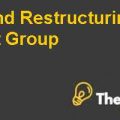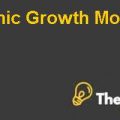
Introduction
The term wealth inequality is a term which shall describe the unequal distribution of the assets that are present within a population. United States basically exhibits under the wide disparity of wealth between the poor and the rick than any other major developed nation in the world.Basically wealth is a net worth that sums up the total of the assets minus the liabilities.
Assets include everything which ranges from the personal owned residence and the cash that is present in the accounts, the savings, and the investments that is made by the individual in stocks and bonds, retirement account and the real estate investment. The liabilities which an individual is liable to pay include the car loan, student loan, mortgage, the credit card balance, and any such thing that needs to be paid in the future. In the United States the wealth inequality is quite prominent as compared to the income inequality (Atkinson, 2004).
Global Inequality is basically defined as a sign of signaling the overall systematic inequalities that shall exist between countries that shall allow for the simultaneous existence of the inequalities within the countries. Global inequality is a concept where the countries actually have to various economic issues and also social issues where they lack behind in various aspects of modern world because of the limited wealth. Today most of the countries that are a part of the Western World are considered to be as the more stable and sound countries in terms of wealth they possess not on the government levels but at the individual levels also.
With respect to this, not only the individuals are sound in terms of financial stability but the companies that are operating in the United States are also more sound and stable. They possess holding wealth, investment, and cash in hand which makes them sound and stable. However, it is important to note that the global recession of 2008 struck the economy of the United States most negatively.
The reason is simple, most of the companies that were present were actually dependent upon the plastic money and their business was mostly run by the loans which was obviously an issue which got on to the countries quite significantly and eventually not only did the economies fail but also the companies that were not up to the mark had to stop their operations (Bauer, 1992).
Gini Coefficient and Lorenz Curves
It has been noted that the Gini Coefficients and the Lorenz Curves are used to basically gain the insights of the range of the different cases in which the inequality has been observed as a policy issue. Moreover, it is inevitably a fact that the considerable variations between the different countries since the varying degrees where each and every degree will have all different resource endowment and the institutional norms which shall drive the constraints along with the social, political and social development (Bhagwati, 2004).
Along with this, it should be rather emphasized through the table which indicates the richest countries economically. Furthermore, the Gini Coefficient basically looks to help in providing the information about a country’s income, the over investment spending patterns, and the differences which vary country to country. Finally, if the Gini Coefficient of two countries is same does not mean that the Lorenz Curves will be same also (Gastwirth, 1972).
Happiness Index
The happiness index is basically an index of the human well being and the environmental impact that has been introduced by the New Economics Foundation (NEF) in the year 2006. The index basically weighsthe progressively higher scores to all the nations with rather lower ecological footprints.
The index helps in designing the challenge along with the well-established Gross Domestic Product (GDP) and the HDI which is the Human Development Index. Moreover, the Gross Domestic Product is rather seen as an inappropriate and an unusually ultimate aim where it presents that most of the people are not rich (Diener, 2008).
Discussion
Market Capitalization
Market capitalization is defined as the total dollar market value of the shares that are outstanding of a public limited organization. Moreover, it is equal to the share price times the number of shares that are outstanding. Along with this, as the outstanding stock is bought and then sold in the public markets, the capitalization can then be used as a proxy for the public opinion of the company’s net worth and also is a determinant factor in some forms of the stock valuation. The overall investment community has been using these figures to help determine a firm’s size as opposed to the total assets and the sales.....................
This is just a sample partial case solution. Please place the order on the website to order your own originally done case solution.










